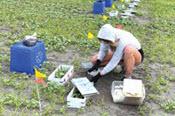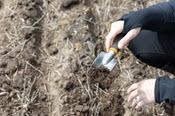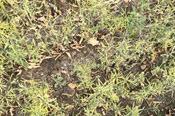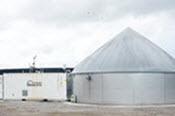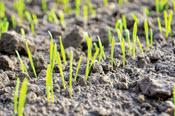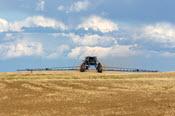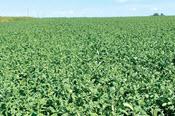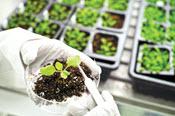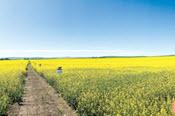Better Farming publishes nine editions of its Prairies magazine each year. After publishing each edition, we share a feature article online. Each Better Farming Prairies magazine includes much more content – you won’t want to miss it. If you don’t receive the print edition of Better Farming Prairies, but you enjoy reading the articles below, be sure to subscribe to the magazine!
Fertilizer management can reduce emissions & input costs.
By Emily Croft
Farmers across Canada are seeking clarity for what the fertilizer emission targets set by the government mean for their crops.
In December 2020 the federal government announced targets for the reduction of greenhouse gas (GHG) emissions, including the goal of reducing GHG emissions from fertilizer use by 30 per cent of 2020 levels by 2030.
Many farmers were concerned that these targets would threaten traditional fertilizer use and productivity on Canadian farms.
Spring soil sampling may prove to be especially beneficial.
By Paige Kennedy
As spring arrives here in Western Canada, producers are finally getting out in their fields. While seeding has started for many growers, one consideration now is spring soil sampling.
Do what you can to prepare for the inevitable.
By Colleen Halpenny
Prairie producers continue to look for strategies to prepare for the unpredictable weather patterns that can and will impact crop yields.
While many producers still deal with the ongoing effects of recent droughts (Agriculture and Agri-Food Canada statistics indicated a 40 per cent drop in 2021 crop yields across the Prairies), we spoke with some industry experts on mitigating drought-related damage.
Sustainable? Yes. Attainable? Not to the masses. With a focus on carbon neutrality, digesters are the ideal fit, if the market allowed for increased access.
By Colleen Halpenny
Weather volatility and climate change are an increasing focal point when making decisions on-farm, as are the external pressures from boards, governments, and consumers for more sustainable operations.
Application Is Still Effective Despite Price Hikes – With Some Conditions.
By Stacy Berry
Phosphorus is “one of the three macronutrients required by plants in the greatest quantities (nitrogen and potassium are the other two),” explains Stacie Yaremko, manager of Agronomic Solutions with Nutrien Ag Solutions in Peace River, Alta.
The term macronutrient simply means that lots of it is needed. “You need phos in pounds per bushel, not grams,” further explains Kelsey Klyzub, sales leader with Cargill, based in Vermilion, Alta.
Why does a plant need phosphorus?
Hand-Carved Tables Bring Fond Memories of Mealtimes Past
By Ralph Winfield
As noted in an earlier article, the T. Eaton Company provided an extensive shopping experience, especially for rural people. Their catalogue provided many smaller items that were appreciated as birthday or Christmas presents. But more importantly, the company provided many larger items.
What it means for wheat in western Canada in 2023
By Emily Croft
In fall 2021 and early spring 2022, farmers in Western Canada began hearing reports of a potential shortage of glyphosate that would affect crop production and weed management during the growing season of 2022.
“Glyphosate is an important component of a strong integrated weed management program on the Prairies,” explains Jeremy Boychyn, agronomy extension manager at Alberta Wheat and Barley Commission.
By Stacy Berry
In the summer of 2022, producers across the Prairies witnessed a rare event which left many questions unanswered, and, as Dale Litke, a farmer near Crossfield, Alta., says, “the answers … left more questions.”
What was this mysterious event?
Canola had been seeded as normal and on schedule. It had emerged well enough, with some appreciated early-season moisture. Early spring was a bit cooler than desired, but again, nothing wildly out of the ordinary. And yet, mid-July rolled around, and many farmers’ canola was simply … not flowering.
Health Canada approval opens ‘tremendous possibilities.’
By Colleen Halpenny
Higher yields, improved taste, disease resistance, and adaptable growing conditions have been achieved through a variety of techniques, ranging from conventional breeding to modern molecular tools such as GMO and gene editing.
Keeping your crop clean in 2023
By Colleen Halpenny
For almost 50 years now, canola has been the pride of Canadian growers. And canola diseases have challenged Prairie farmers for almost as long.
To get a jump on what’s ahead in a few months’ time, Better Farming interviewed industry experts and canola growers to discuss the diseases which could impede yields, and the measures you might consider to prevent them through 2023.



